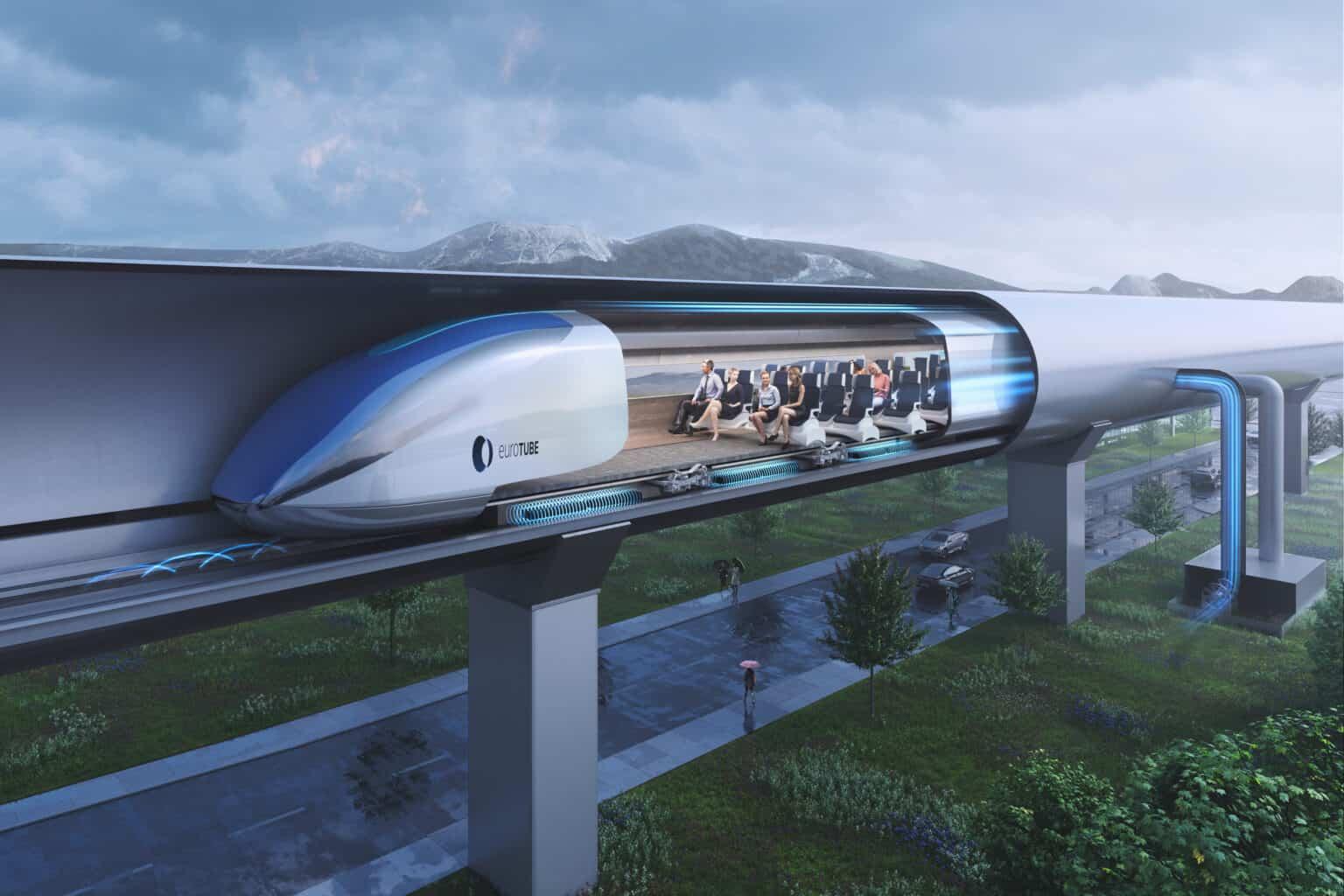Science fiction has long served as a source of inspiration for technological advancements. Over the years, the line between the fantastical world of sci-fi and the reality of technological innovation has blurred, bringing forth groundbreaking developments. As we look to the future, seven remarkable innovations are transitioning from the realm of science fiction to reality.
Personalized Medicine
Personalized medicine, once a futuristic concept, is poised to revolutionize healthcare in the coming years. Imagine a world where treatments are designed specifically for your unique genetic profile, leading to more effective therapies and fewer side effects. This exciting future is fueled by the twin engines of artificial intelligence (AI) and gene editing, unlocking the potential to tailor treatments to individual needs with unprecedented accuracy.
However, with this remarkable progress comes significant ethical considerations. Privacy concerns surrounding genetic data must be addressed, and ensuring equitable access to these personalized treatments will be crucial to avoid exacerbating existing healthcare disparities. Additionally, the potential for misuse of this technology raises important questions about informed consent and the ethical boundaries of genetic modification.
Despite these challenges, the potential benefits of personalized medicine are undeniable. Imagine a future where doctors can predict your susceptibility to specific diseases and develop preventative measures before symptoms appear. Personalized treatments for cancer, chronic illnesses, and even previously incurable conditions could become commonplace, improving the quality of life for millions.
According to recent studies, the global market for personalized medicine is projected to reach a staggering $3.73 trillion by 2026, highlighting the immense potential of this field. This rapid growth underscores the need for proactive discussions and ethical frameworks to ensure these innovations are used responsibly and for all benefit.
Quantum Computing
Get ready for a computing revolution. Imagine solving problems in minutes that would take traditional computers years. This is the promise of quantum computing, an evolutionary technology poised to change everything from drug discovery to cryptography. Think cracking encryption codes in a blink, simulating complex molecules in seconds, and designing revolutionary materials with unprecedented accuracy.
But harnessing this quantum power isn’t without its hurdles. Like a mischievous genie, quantum bits are notoriously difficult to control. Keeping them “coherent” and scaling up the technology to tackle real-world problems are the challenges we must overcome.
But the potential payoff is worth it. Quantum computing can unlock solutions to some of humanity’s biggest problems, from disease to climate change. Imagine a world where we can design life-saving drugs in record time, develop new energy sources, and optimize complex systems with unprecedented efficiency. The future is quantum, and it’s closer than you think.
Hyperloop Travel
Imagine whisking from city to city in minutes, not hours. With its near-supersonic pods hurtling through vacuum tubes, Hyperloop promises to make this sci-fi dream a reality. This revolutionary technology could drastically cut travel time, making distant destinations feel like next-door neighbors.
A study by Virgin Hyperloop says the technology could reduce travel time between cities like Los Angeles and San Francisco to just 43 minutes. Think weekend getaways to Paris or business trips to Tokyo, all within a lunch break!
But like any groundbreaking innovation, Hyperloop faces challenges. Building the infrastructure for this futuristic transportation network is no small feat, and convincing the public to trust hurtling through tubes at breakneck speeds is another hurdle.
Still, the potential rewards are too great to ignore. Hyperloop offers both convenience and sustainability with its energy-efficient design and reduced carbon footprint. So buckle up; travel’s future is here and moving fast!
Personalized Learning
Imagine a world where your education is tailored just for you, where every lesson is a personalized adventure that ignites your curiosity and fuels your passion. This is the promise of personalized learning powered by AI technology that understands your unique needs and learning styles.
Think of it like having your personal learning coach constantly adjusting the curriculum to keep you engaged and challenged. This adaptive approach to education can unlock every student’s potential, regardless of background or learning pace. Imagine students mastering complex concepts easily, diving deeper into their interests, and developing a lifelong love of learning.
The potential of personalized learning extends beyond individual students and into organizational training and development. With the rise of enterprise learning management systems (LMS), companies can now leverage AI-powered tools to deliver customized learning experiences for their employees.
This can be anything from onboarding new hires to providing ongoing professional development opportunities. By tailoring learning pathways to individual employee needs and skill gaps, companies can unlock greater productivity, engagement, and innovation within their workforce.
However, like any innovation, there are challenges to consider. Protecting student data privacy, ensuring inclusivity for all learners, and bridging the digital divide are crucial hurdles to overcome.
Lab-Grown Meat
Imagine juicy steaks, tender chicken nuggets, and all your favorite meaty dishes, but without the environmental footprint and ethical concerns of traditional meat production. Sounds like science fiction, right? Enter lab-grown meat, a revolutionary technology bringing this futuristic vision to life.
This groundbreaking approach promises to drastically reduce the environmental impact of meat production, saving resources like water and land while minimizing greenhouse gas emissions. Plus, it raises the bar on animal welfare by eliminating the need for slaughter.
But like any innovation, it’s not all sunshine and rainbows. Convincing people to try meat grown in a lab won’t be a walk in the park. Additionally, scaling up production and navigating regulatory hurdles must be overcome.
Still, the potential of lab-grown meat is undeniable. It offers a delicious solution to the growing challenges of our food system, paving the way for a more sustainable and compassionate future. So next time you crave a burger, consider taking a bite of the future with lab-grown meat!
Direct Air Capture
Imagine a technology that could suck carbon dioxide out of the atmosphere, reversing the harmful effects of climate change. This is the promise of direct air capture (DAC), a technology that can be a game-changer in the fight for our planet.
DAC works like a giant vacuum cleaner, pulling CO2 from the air and storing it safely underground. This captured carbon can be used for various purposes, like creating sustainable fuels or building materials. The potential is vast, offering a way to clean up our atmosphere and even turn a problem into a resource.
But like any superhero, DAC has its Kryptonite. Energy consumption is a big concern, as current capture methods require significant power. Scaling up DAC technology and making it more cost-effective are crucial challenges to overcome.
Despite these hurdles, the potential of DAC is too great to ignore. Leading climate experts like the International Energy Agency see it essential for achieving net-zero emissions by 2050. So next time you look up at the sky, imagine a future where we’re actively removing carbon dioxide, creating a cleaner and healthier planet for future generations.
Artificial General Intelligence (AGI)
Imagine machines that think and learn like humans, capable of tackling any intellectual challenge we throw their way. This is the compelling promise of artificial general intelligence (AGI), a technology that raises awe-inspiring possibilities and profound societal questions.
As we inch closer to this AI singularity, we must tread carefully. Ethical guidelines and transparency are crucial safeguards, ensuring we harness AGI’s power for good. The potential benefits are vast, from accelerating scientific progress (e.g., AI in healthcare) to solving global challenges. But we must also be mindful of unintended consequences, ensuring AGI remains a tool for human benefit, not a threat.
The future of AGI is uncertain, but it’s a future we must shape responsibly. By engaging in open dialogue, anticipating potential risks, and prioritizing ethical development, we can ensure AGI becomes a force for positive change, enriching our lives and propelling humanity forward.
Navigating the Next Frontier: Responsible Innovation for a Brighter Tomorrow
The innovations transitioning from science fiction to reality present a future filled with exciting possibilities and transformative changes. From personalized medicine to artificial general intelligence, these advancements have the potential to reshape how we live, work, and interact with the world.
As we embrace this technological evolution, it is crucial to navigate the associated challenges responsibly, ensuring that the benefits are accessible to all and that ethical considerations guide their development. The future is arriving faster than we imagined, and the key to unlocking its full potential lies in our ability to adapt and innovate responsibly.









